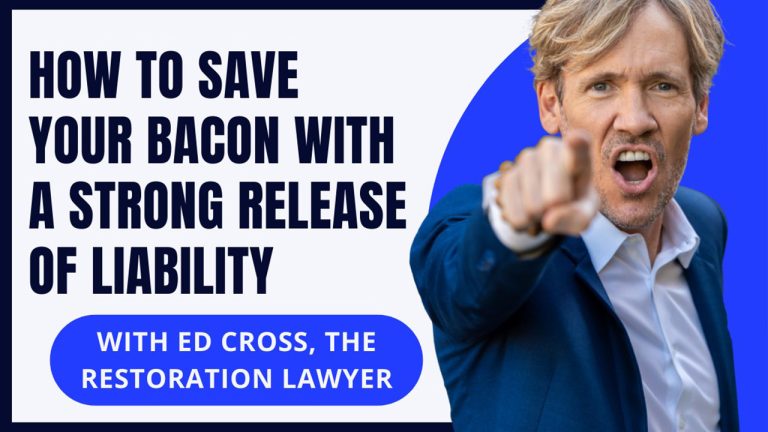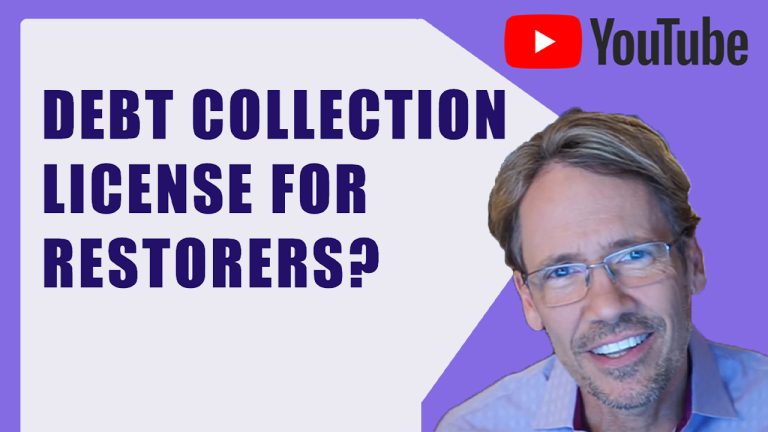Cross-Examination: Who is in Charge of Setting Restoration Prices?
‘We Don’t Pay for That.’ Why DON’T you Pay for That?
The insurance industry is legally required to adapt to what the restoration industry charges. It is not the other way around. Carriers need an objectively reasonable justification for denial of claims decisions or they face liability for insurance bad faith.
“When restorers allow insurers to make major changes to prices and scopes of work, it creates a serious risk that policyholders will end up with something less than what restorers believe in their professional judgment are the best methods to return properties to their pre-loss condition.”
These acts are forcing restorers to cut corners; encouraging unsafe, unsupervised, unprofitable projects. This is not sustainable for the insurance carriers, home values and safety, nor for the survival of the restoration company.
So what does the insurance contract require the insurer to pay? There are a few key adjectives that describe what carriers are required to pay: “customary,” “usual,” and “reasonable.” Read the full article for more details. An adjuster’s denial to coverage is an invitation to ask questions. Ask the adjuster what part of the policy says they do not have to pay for that. If they are basing their decision off of what is customary, ask for what data they have to support that. Ask what documentation they need or they feel they are missing.
Being pressed to match someone else’s prices? You are not required to do anything requested by any third party, including the carrier, in the absence of a contractual obligation. (See the RIA’s Third Party Consultant Position Statements.)
Adjuster refusing to deviate from Xactimate pricing? A standardized price list is only a reference point. If you charge more than the prices in standardized price lists, be prepared to explain why. That may be easier than you think, particularly with material prices, which are usually very easy to verify. Fight back against adjusters who automatically presume that just because a standardized price list is published monthly, every number in it has been updated every month. The best-kept secret is that the industry trend reports in XactAnalysis show price history. Prices need to keep pace with inflation, supply chain issues, demand and other relevant factors. Read the full article for more details.
It would behoove restorers to become very familiar with the insurance policies at play in their transactions. Never advise a policyholder about coverage or “represent” the policyholder in a claim settlement unless you have been trained in coverage interpretation and you have been engaged to interpret the policy and you have the required license. My recommendation to review the policy is not for you to act as a public adjuster, but for you to understand the parameters of what the insurance company is required to pay, so you can negotiate on your own behalf. The easiest way to get the policy is by submitting to the insurer an Insurance Information Authorization and Release executed by the policyholder. It directs the insurer to send you a copy of the policy. If the insurer refuses, that is an unreasonable claim handling practice, which could be evidence of insurance bad faith, in my view. (Get an Insurance Information Authorization and Release form as a part of The Book on the Assignment of Benefits.)
In most states, unfair and unreasonable claims handling practices can subject the carrier to liability for insurance bad faith. Unfortunately, most policyholders lack the resources to pursue claims for bad faith, but some restorers are up to the challenge. In some states, this can be accomplished with an Assignment of Insurance Rights. Check out the RIA’s 50-State Reference Guide on Assignments of Benefits and Insurance Bad Faith, and then talk to a local lawyer about your options. RIA members can access the guide from the Advocacy section of the RIA website.
And for Pete’s sake, call Verisk and report your prices!






